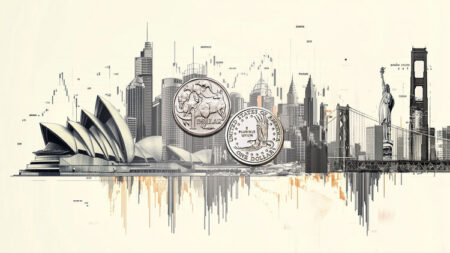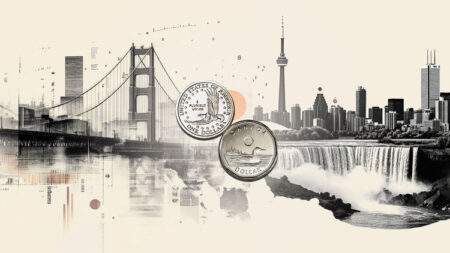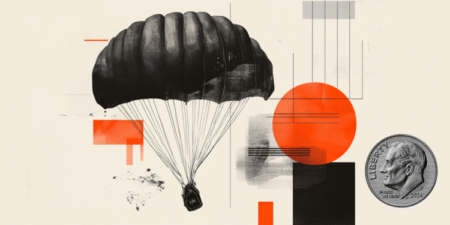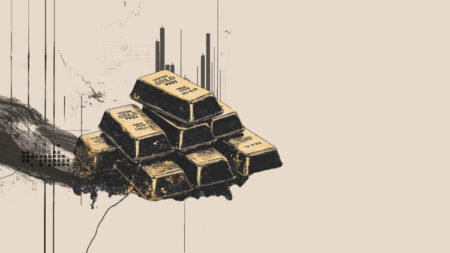- US Dollar downside attempts remain capped above 0.8100, keeping the 0.8150 high at a short distance.
- Solid US GDP and employment data and a hawkish Fed gave an additional boost to the Greenback on Wednesday.
- Later today, US PCE inflation data is expected to support the Fed’s “higher for longer” stance.
The US Dollar maintains its bid tone intact against the Swiss Franc, holding gains after a nearly 3% rally over the last few days. Downside attempts seen earlier in the day have been contained above 0.8110, and the pair trims losses ahead of the PCE Price Index report, approaching a four-week high, at 0.8150
The Greenback rallied across the board on Wednesday, after the Federal Reserve maintained its benchmark interest rate on hold and pushed back hopes of upcoming rate hikes. Fed Chairman Jerome Powell reiterated his “patience” rhetoric, as he assessed that the impact of tariffs might take months to manifest.
Strong US data and a hawkish Powell boost the USD
Previous macroeconomic releases endorsed the US central bank’s stance, as US GDP beat expectations, despite the decline in private sector investment and relatively soft consumer spending figures.
Also on Wednesday, ADP employment figures beat expectations with a 104,000 increment on net private payrolls in July, well beyond the 78,000 increase forecasted by market analysts and reversing a 23,000 decline in June.
Dollar bears remain in check on Thursday with all eyes on July’s PCE Price Index figures. The headline inflation is expected to have accelerated to a 2.5% year-on-year reading, from the previous 2.3% with the Core PCE Price Index steady at 2.7%. All in all figures are consistent with the Fed’s “higher for longer” view and broadly USD-supportive.
Swiss Franc FAQs
The Swiss Franc (CHF) is Switzerland’s official currency. It is among the top ten most traded currencies globally, reaching volumes that well exceed the size of the Swiss economy. Its value is determined by the broad market sentiment, the country’s economic health or action taken by the Swiss National Bank (SNB), among other factors. Between 2011 and 2015, the Swiss Franc was pegged to the Euro (EUR). The peg was abruptly removed, resulting in a more than 20% increase in the Franc’s value, causing a turmoil in markets. Even though the peg isn’t in force anymore, CHF fortunes tend to be highly correlated with the Euro ones due to the high dependency of the Swiss economy on the neighboring Eurozone.
The Swiss Franc (CHF) is considered a safe-haven asset, or a currency that investors tend to buy in times of market stress. This is due to the perceived status of Switzerland in the world: a stable economy, a strong export sector, big central bank reserves or a longstanding political stance towards neutrality in global conflicts make the country’s currency a good choice for investors fleeing from risks. Turbulent times are likely to strengthen CHF value against other currencies that are seen as more risky to invest in.
The Swiss National Bank (SNB) meets four times a year – once every quarter, less than other major central banks – to decide on monetary policy. The bank aims for an annual inflation rate of less than 2%. When inflation is above target or forecasted to be above target in the foreseeable future, the bank will attempt to tame price growth by raising its policy rate. Higher interest rates are generally positive for the Swiss Franc (CHF) as they lead to higher yields, making the country a more attractive place for investors. On the contrary, lower interest rates tend to weaken CHF.
Macroeconomic data releases in Switzerland are key to assessing the state of the economy and can impact the Swiss Franc’s (CHF) valuation. The Swiss economy is broadly stable, but any sudden change in economic growth, inflation, current account or the central bank’s currency reserves have the potential to trigger moves in CHF. Generally, high economic growth, low unemployment and high confidence are good for CHF. Conversely, if economic data points to weakening momentum, CHF is likely to depreciate.
As a small and open economy, Switzerland is heavily dependent on the health of the neighboring Eurozone economies. The broader European Union is Switzerland’s main economic partner and a key political ally, so macroeconomic and monetary policy stability in the Eurozone is essential for Switzerland and, thus, for the Swiss Franc (CHF). With such dependency, some models suggest that the correlation between the fortunes of the Euro (EUR) and the CHF is more than 90%, or close to perfect.
Read the full article here
















